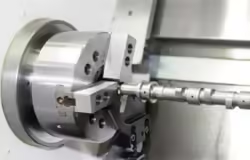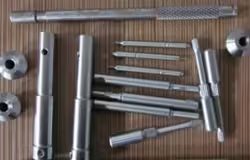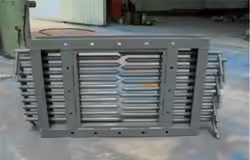
Round Steel Bar: The Complete Guide to Everything You Should Know
Table of Contents
Understanding What a Round Steel Bar Is

A round steel bar is a solid cylindrical metal product used across various engineering and industrial sectors. Known for its mechanical stability and excellent machinability, it serves as a core material in everything from automotive shafts to construction reinforcements. Because of its uniform cross-section, the round steel bar distributes load and stress evenly—making it a preferred choice for both static and dynamic applications.
Core Concept: The Geometry Behind Strength
The circular form of a round steel bar is not just aesthetic—it plays a fundamental role in resisting torsion and distributing mechanical forces. This uniformity makes it ideal for parts subjected to rotation, bending, and pressure, such as spindles, axles, bolts, and fasteners.
Manufacturing Process of Round Steel Bars
Producing a high-quality round steel bar involves multiple steps of controlled transformation, from raw steel melting to precision finishing. Each step determines its performance, appearance, and dimensional accuracy.
Steelmaking and Billet Preparation
Steelmaking begins with carefully selected raw materials like iron ore and scrap. After smelting and refining, molten steel is cast into billets—square or rectangular steel forms that will later be rolled into round shapes.
Hot Rolling: Shaping Under Heat
In the hot rolling process, billets are heated to approximately 1,200°C and passed through rolling stands that progressively reduce their cross-section. This process refines the grain structure, increases toughness, and improves ductility. The resulting black hot rolled round bars are suitable for structural and mechanical use.
Cold Drawing: Precision and Strength
Cold drawing enhances surface finish and dimensional accuracy. By pulling a hot rolled bar through dies at room temperature, manufacturers achieve tighter tolerances and improved mechanical strength—producing bright, smooth-surfaced bars widely used in precision machining and tooling.
Heat Treatment: Tailoring Mechanical Properties
After shaping, heat treatment such as annealing, quenching, and tempering fine-tunes the internal microstructure. This step is critical to achieve the right balance of hardness, toughness, and machinability for specific end-use applications.
Finishing and Inspection
Surface treatments like polishing, peeling, or grinding remove imperfections and scale. Dimensional checks, ultrasonic testing, and chemical analysis ensure each bar meets stringent quality standards.
Types and Grades of Round Steel Bars

Round steel bars are categorized by material composition, surface condition, and production process. Each type offers a unique balance of properties suitable for distinct environments and performance needs.
Carbon Steel Round Bars
Carbon steel round bars, such as A36, C45, or 1045, combine strength with cost-effectiveness. These are ideal for applications like machine shafts, axles, and construction supports. Their balance of hardness and ductility makes them easy to weld and machine.
Stainless Steel Round Bars
Made from corrosion-resistant alloys like 304, 316, or 431, stainless steel round bars maintain integrity in marine, chemical, and medical environments. Their chromium-rich composition forms a protective oxide layer that resists oxidation and rust.
Alloy Steel Round Bars
Alloy steels (e.g., 42CrMo, 20MnTiB, SCM440) incorporate chromium, molybdenum, or nickel to improve tensile strength and fatigue resistance. They are preferred for heavy-duty engineering applications, such as drive shafts, crankshafts, and high-load machinery components.
Comparative Data: Key Mechanical Properties of Common Round Steel Bars
Below is a comparative table summarizing the mechanical performance of popular steel grades used for round bars:
| Steel Grade | Type | Tensile Strength (MPa) | Yield Strength (MPa) | Elongation (%) | Density (g/cm³) | Main Applications |
|---|---|---|---|---|---|---|
| A36 | Carbon Steel | 400–550 | 250 | 20 | 7.85 | Structural, Fabrication, Construction |
| C45 (1045) | Medium Carbon | 570–700 | 355 | 17 | 7.85 | Machine Parts, Shafts, Bolts |
| 304 | Stainless Steel | 520–750 | 215 | 40 | 7.93 | Marine, Food Equipment, Chemical |
| 42CrMo4 | Alloy Steel | 930–1080 | 750 | 12 | 7.83 | Automotive, Gear Shafts, Forgings |
| 316L | Stainless Steel | 480–620 | 170 | 45 | 8.00 | Chemical, Medical, Marine |
Interpretation:
The table shows how tensile and yield strength vary significantly among grades, allowing engineers to select materials based on specific mechanical and environmental requirements.
Applications of Round Steel Bars in Different Industries

Construction and Structural Engineering
In the construction industry, round steel bars are fundamental for creating frameworks, anchors, and foundation reinforcements. Their ability to absorb stress and deformation makes them essential for modern infrastructure and bridge design.
Machinery and Mechanical Components
Machined round steel bars serve as shafts, rods, bushings, and gear blanks. Cold-drawn bright bars, in particular, offer high precision and stability under rotational loads.
Automotive and Aerospace Engineering
Automotive manufacturers rely on alloyed round steel bars for critical components such as drive axles, connecting rods, and crankshafts. Aerospace applications benefit from their excellent fatigue resistance and strength-to-weight ratio.
Energy and Petrochemical Equipment
Stainless steel round bars perform exceptionally well in high-temperature, corrosive environments like turbines, reactors, and offshore drilling rigs.
Precision Engineering and Tool Manufacturing
High-grade round bars are used for producing measuring tools, dies, and fasteners where dimensional consistency and surface finish are crucial.
Surface Treatment and Finishing Options
Black (Hot Rolled) Surface
Black steel bars retain their mill scale and are mainly used where surface appearance is secondary—ideal for forging and general structural applications.
Bright (Cold Drawn) Surface
Bright bars feature a smooth, shiny surface with accurate tolerances, making them suitable for machining, automotive, and precision parts.
Peeled or Ground Surface
These bars undergo mechanical peeling or centerless grinding to remove scale and ensure a perfect surface for high-speed or precision-engineered applications.
Round Steel Bar vs Other Steel Forms
Round vs Square Bars
Round bars provide better torsional performance and machinability, while square bars offer higher rigidity in frameworks.
Round Bar vs Flat Bar
Flat bars are suited for structural frames and brackets, whereas round bars are optimized for shafts and rotational parts.
Concept Insight: Selection by Function
Choosing between round, flat, or square bars depends on the intended load type—torsional, bending, or compressive—and desired fabrication method.
Quality Control in Round Steel Bar Production
Modern manufacturers employ a combination of non-destructive testing (NDT), dimensional verification, and mechanical analysis to ensure reliability.
Ultrasonic and Magnetic Particle Testing
These techniques detect internal cracks or inclusions invisible to the naked eye, ensuring material integrity before machining or forging.
Dimensional Accuracy and Tolerance
High-precision round bars maintain tolerances as tight as ±0.02 mm for bright polished variants, critical for components in bearings or hydraulics.
Market Trends and Procurement Insights

The global round steel bar market continues to expand, driven by industrial automation, renewable energy projects, and advanced machining technologies. Buyers now prioritize not just price and size, but also machinability, surface finish, and sustainability.
Concept Insight: Smart Steel Manufacturing
Leading producers integrate AI-based quality monitoring and IoT systems that track dimensional accuracy, energy use, and production output in real time.
Conclusion
From construction frameworks to aerospace precision components, round steel bars provide a perfect balance of strength, formability, and performance reliability.
As industries move toward automation and sustainability, these cylindrical workhorses continue to play a central role in shaping the metal engineering world.
Looking for premium-grade round steel bars or customized machining solutions? Contact our technical team today for detailed specifications, material advice, and a quotation tailored to your project’s needs.
FAQ
How do I choose between hot rolled and cold drawn round bars?
Hot rolled bars are ideal for heavy-duty structural use, while cold drawn bars offer greater precision and surface quality for machining and finishing.
Can round steel bars be customized for diameter and length?
Yes. Most suppliers provide custom cutting, heat treatment, and surface finishing options tailored to industrial design needs.
What’s the difference between carbon and stainless steel round bars?
Carbon steel offers strength at low cost, but stainless steel resists corrosion better and is preferred for high-humidity or chemical environments.
How do surface treatments affect bar performance?
Processes like polishing and coating reduce surface friction and wear, improving fatigue life in rotating machinery.
Are round steel bars suitable for welding and forging?
Yes, depending on the grade. Carbon and alloy steels are easily weldable, while stainless steels may require specific filler materials and procedures.






